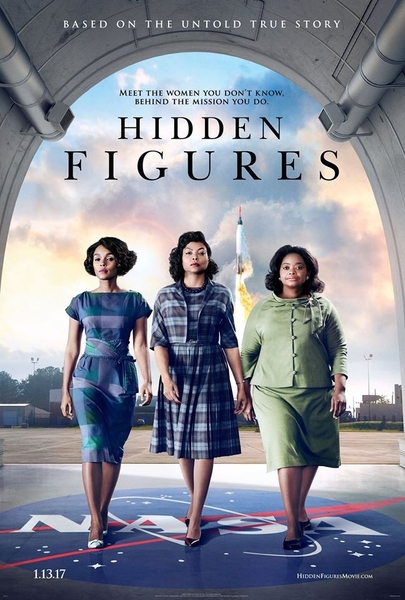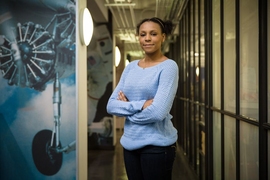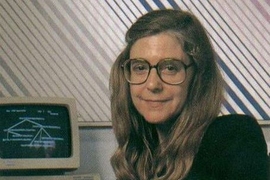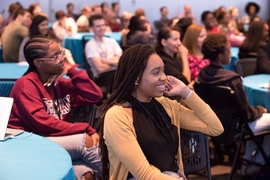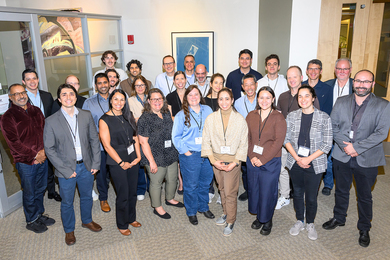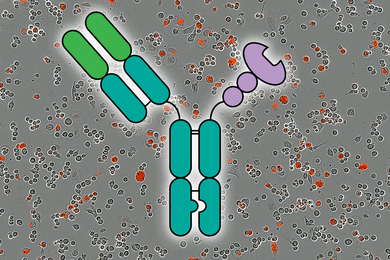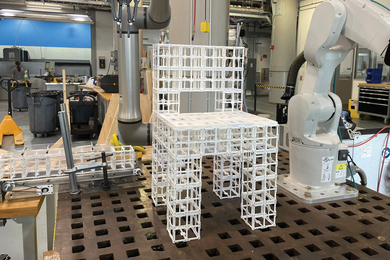In the late 1950s and early 1960s, the United States was engaged in a frantic competition with the Soviet Union to launch the first Earth-orbiting satellite, place a human in space, and, ultimately, set foot on the moon. Laboring behind the scenes in this monumental technological effort were what NASA termed “colored computers,” African-American female mathematicians responsible for critical calculations and other technical works.
On Dec. 25, 20th Century Fox will release the film “Hidden Figures,” based on the book of the same title by Margot Lee Shetterly. The film tells the true-life story of three of these unsung heroes whose work played a key role in NASA's space race victories. But on Dec. 8, the MIT community enjoyed a sneak preview screening of the film, thanks to Fox and the MIT Department of Aeronautics and Astronautics (AeroAstro), with the MIT Women’s and Gender Studies Program and the Consortium for Gender, Culture, Women, and Sexuality as co-sponsors.
In his review of the film, Variety critic Peter Debruge noted “just how thoroughly the deck was stacked against these women.” He wrote, “‘Hidden Figures’ is empowerment cinema at its most populist, and one only wishes that the film had existed at the time it depicts.”
Following the MIT screening at the Kendall Square Cinema, a panel comprised of Shetterly, MIT Museum Director of Collections Deborah Douglas, and Insitute Professor Sheila E. Widnall offered comments on the film and solicited input from the audience of MIT students, staff, and faculty. Recently retired NASA astronaut and AeroAstro alumna Cady Coleman '83 also addressed the audience.
Shetterly, who co-produced the film, provided insights into how she was inspired to write her book after growing up with a father who worked as a research scientist at NASA's Langley Research Center in Hampton, Virginia. She also noted that, while the film focuses on three individuals, she learned about scores of women at NASA while doing research for her book, which was published earlier this fall.
Widnall, who came to MIT as an undergraduate in 1956 and would later become the Institute’s first female engineering professor, was “shocked” by the fact that one of the film's protagoinsts, Mary Jackson, was told outright that she couldn't aspire to be an engineer simply because she was a woman. “At MIT, I was never told I couldn’t be an engineer. I never felt I didn’t belong,” Widnall said. She added that the hurdles faced by the women in the story “is a lesson we must never forget.”
Douglas, who authored the book “American Women and Flight Since 1940” (University Press of Kentucky, 2004), moderated the panel. She noted that Shetterly’s work “captures a really basic aspect of aeronautical engineering in the mid-20th century: that engineering analysis relied on a lot of number crunching — not just a few quick computations with a slide rule but reams and reams of equations solved one after another, and while computers would eventually do this, the reality is that there were large cadres of human computers, mostly women, who performed these calculations.”
AeroAstro fourth-year student Rachel Harris said she was struck by the hurdles the characters in the movie faced and how they surmounted them. “I hope that this movie can generate a similar response in the broader nation such that we can continue to identify and fix the inequalities we still face,” Harris said.
Ashley Simon, a second-year biology major, found the film “powerful.” “I feel like it took we college students out of our comfort zone, which is the time we live in. We’ve all heard stories about the time, but to see what was happening is something totally different. The film took me on an emotional rollercoaster,” Simon said. Simon was particularly pleased that author Shetterly attended the event. “She provided us with more insight into the stories and told us more about the real women she interviewed. Margot Lee Shetterly was the piece to the puzzle that I didn’t even know was missing.”
Douglas summed up her reaction to the event: “The most powerful thing for me was to see how deeply affecting the film was for many in the audience. A starving person sometimes doesn’t know how hungry he or she is until there is an abundance of food. From the audience comments, I think there is a very deep hunger among many at MIT for the kind of affirmation that this film provides.”
Copies of the “Hidden Figures” book — including a special young readers' edition — were available at a discounted price prior to the screening, courtesy of the MIT Press. For those interested in diving further into the hidden histories of black women at NASA, the book is the next selection in MIT's all-community book club, MIT Reads. For information on discussion dates, visit the MIT Reads website.

